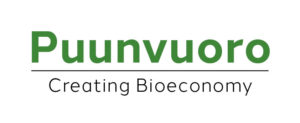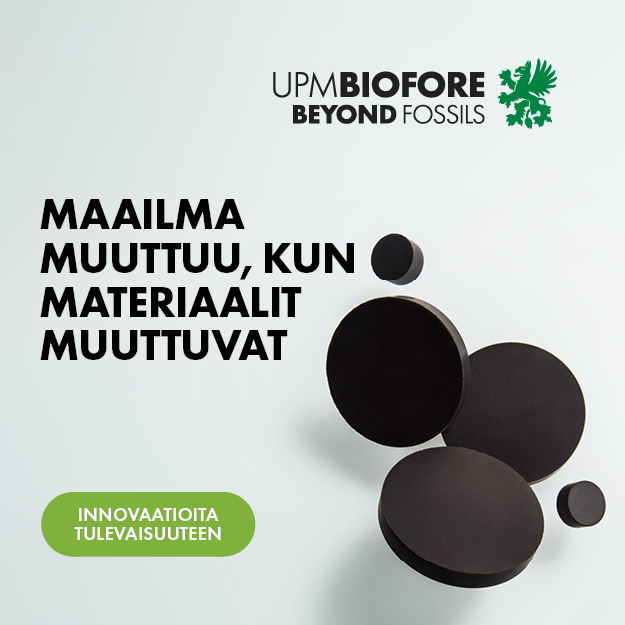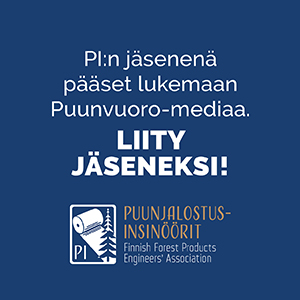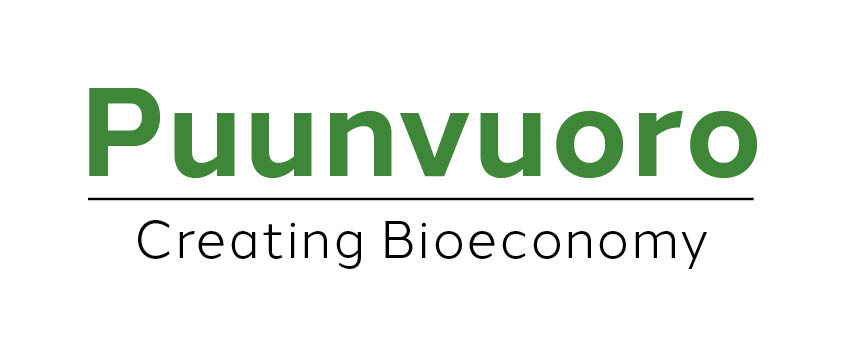Varkaus is now looking confidently into the future. Stora Enso’s EUR 110 million conversion investment brings continuity to the city which is being tested by the structural changes underway in the forest industry; the mill, which employs some 400 people directly and 2,000 indirectly, is one of the most important employers in the region.
Stora Enso’s Varkaus mill has entered a new era thanks to the increasing global demand for packaging board. The bulk of the mill’s production is exported to Europe, Asia and South America. Its paper machine PM3 has now been harnessed to produce kraftliner instead of fine paper, having thereby been given a third life during its lifespan.
Paper machine PM3 has now been harnessed to produce kraftliner instead of fine paper, having thereby been given a third life during its lifespan.
When acquired by the Varkaus mill in 1961, the paper machine was the biggest paper machine of its time in Europe and produced newsprint. In the mid-1980s, it was converted into a fine paper machine.
When demand for newsprint, magazine paper and finepaper began to decline, the machine’s future was in jeopardy.
At the same time, Stora Enso was contemplating the potential of virgin fibre-based packaging board to generate profitable growth.
Based on its feasibility studies, Stora Enso decided to invest in Varkaus, whose proximity to the raw materials, good traffic connections and competence spoke for themselves. The integrated mill, composed of a pulp mill, power plant and the paper machine as well as a functional infrastructure, was also of an ideal size as a target for a cost-effective investment.
“The paper machine’s trim width also had something to do with it. It is exactly the right width for the new end-products,” says Jarkko Tehomaa, director of Stora Enso’s Varkaus mill.
He nevertheless wishes to emphasise that there is a little more at stake than the mere conversion of a single paper machine.
“We changed from a paper mill to a packaging board mill, which means that we have had to rethink all of the integrated mill’s sub-processes,” he says.
The four goals of the transformation
The technical conversion project of the Varkaus mill had four main goals.
“We challenged our partners to design solutions that would be exemplary not only in terms of occupational safety, but production, energy and environmental efficiency. We were looking for tried and tested options that make use of the latest technological advances,” says Tehomaa.
The conversion project involved a wide network of partners, the key operators of which included, in addition to Stora Enso’s own experts, the engineering firm Pöyry and the machinery suppliers Andritz, Honeywell and Valmet. Andritz, Honeywell and Valmet have a long history of cooperation with Stora Enso. All in all, the partners involved in the project numbered approximately 70.
Andritz supplied Stora Enso’s mill with two new evaporator units, for example, in addition to modernising the fibre line’s cooking, washing and sorting processes, whereas Honeywell was in charge of modernising the control, security and management systems.
Valmet executed the construction and installation of the paper machine’s new headbox and shoe press as well as the replacement of the fourdrinier part and took care of the changes at the paper machine’s dry end. In addition, it supplied the mill with a new quality control system and energy-efficient refiners for pulp treatment.
“A modernisation project of this scale was a challenging initiative from the perspective of project management, given that, while building something entirely new, we were also replacing the old equipment in the existing mill, and because both preparatory and installation work was partially carried out while the machine was in operation. Although our plans were carefully prepared, we did run into things that did not work as well in practice as they did on paper during the course of the project,” says Tehomaa.
While building something entirely new, we were also replacing the old equipment in the existing mill, and both preparatory and installation work was partially carried out while the machine was in operation.
Given that some of the machinery covered by the project’s scope was up to tens of metres long, the physical manoeuvering of such machinery involved a number of aspects that had to be thought out carefully, not forgetting occupational safety.
According to Tehomaa, the conversion project nevertheless proceeded surprisingly smoothly.
“We took advantage of all of the service and maintenance breaks, but the most demanding phase of the conversion process was the six-week changeshutdown which began in late August and during which we carried out the main installations.”
The conversion purgatory
The space around paper machine PM3 was buzzing with activity during the six-week change shutdown. Valmet built a new headbox the size of a good living room at the wet end of the paper machine.
“At its most efficient, work was carried out at three different levels. We were dismantling the old, building the new and installing connections, all at once. When a lot of people work in a confined space, the risk of accidents is high. We placed great emphasis on the planning of work and preemptive occupational safety work, and nothing serious occurred,” says Tehomaa.
“It is always a challenge to work in existing facilities as opposed to a brand new mill environment. Although we have carried out a lot of large-scale renovations on various kinds of paper machines, every one of them is unique. When moving from one type to another, you have to be careful in judging how to make the new machine structures serve the new process. We held very productive discussions with Stora Enso during the sales phase, and these helped us to find the right solution. When the customer knows exactly what they want, it also makes our job easier,” says Sanna Röyskö, sales director at Valmet’s Board and Paper Mills unit.
Andritz’s sales manager Jussi Rintamäki praises Stora Enso’s excellent project management skills and open cooperation during the conversion project in Varkaus.
“The current mill has been documented very well, which facilitated our own technological design in relation to the construction of the new evaporator, for instance. The simultaneous implementation of several modernisation and building projects in an industrial facility would, in all likelihood, not have been possible if the work phases had not been planned in advance as carefully as they were. Good and open cooperation as well as communication between the suppliers and the client made successful cooperation possible in the tight schedule of the shutdown phase,” says Rintamäki.
Efficiency through a central control station
Previously, the control room operations of the pulp and energy production at the Varkaus mill were distributed among a number of different control rooms in terms of the digesters and boilers of the fibre and lye line.
The control room operations of these sections have now been centered in one large central control station from which the operations are controlled. In addition, water purification and the turbines were connected to the central control station as new sections. A total of nine separate control rooms were combined into a single central control station. The board machine and wood handling furthermore have their own control room and mini remote control station, respectively.
“Communication is easier and faster when the employees are in the same space. It allows us to react to disturbances faster,” says Jarkko Tehomaa.
Communication is easier and faster when the employees are in the same space. It allows us to react to disturbances faster.
In addition to process control, the mill has field employees who make rounds at the mill, carry out preventive maintenance and make observations on any possible problems.
The construction of the central control station was a genuine tour de force from Honeywell, on whose control systems and applications the station relies.
“The integration of about ten different information systems is an exceptionally demanding and large-scale project. The fact that the Varkaus mill already had Total Plan Alcont from Honeywell’s previous generation of automation systems in use contributed to the successful implementation of Experion PMD system, which belongs to our new generation of automation systems. In this case, the existing, very extensive automation application that had been honed to perfection over the years was imported to the new system with the help of upgrading tools. This meant that we didn’t have to build everything again from scratch,” says
Honeywell’s business director Marko Jämsén.
Stora Enso’s Varkaus mill now uses the latest and best industrial automation, information and manufacturing execution systems in the industry.
“The Varkaus mill is a fantastic mill-wide reference for Honeywell’s automation and manufacturing execution systems,” says Jämsén.
Positive customer feedback
Stora Enso’s Varkaus mill has produced brown kraftliner and white top kraftliner since October last year. The commissioning of the converted mill has progressed according to plan.
“Production efficiency has improved, but fine-tuning the entire mill into a top-notch condition still requires a lot work,” says Tehomaa.
The customer feedback has been positive.
“Our end-products have already received good feedback from customers, and the starting point for further development is good. The work aiming to optimise product quality is carried out continuously on the basis of the customer feedback.”
The target level of production set for Stora Enso’s Varkaus mill is 390,000 tonnes of kraftliner and 310,000 tonnes of brown unbleached kraft pulp a year.
“We should reach this capacity early next year,” says Tehomaa.
Deliveries to Stora Enso’s Varkaus Mill:
Andritz
- Modernisation of the fibre line’s cooking, washing and sorting process.
- Two new evaporator units and a new methane liquefaction system.
- A LimeDry lime mud disc filter for the recaustisizing plant.
- Renewal of the RCF plant, including a FiberFlow drum pulper, the modernisation of coarse screening and a new hydrocyclone.
- A new burner of malodorous gases for the recovery boiler and the replacement of the cooking surface pipe.
Honeywell
- Modernisation of the automation, security, process information and manufacturing execution systems.
- Experion PMD automation system.
- Uniformance PHD database and tools.
- Safety Manager.
- A Devronizer steam box for the pulp machine’s quality control.
- OptiVision MES.
Valmet
- New headbox
- Renewal of the fourdrinier part, including the extension of the fourdrinier wire with a new top wire unit.
- Replacement of the press section with a new SymBelt shoe press.
- Replacement of the drying section, calender, reeler and slitter-winder.
- Air systems related to the board machine.
- OptiFiner Pro refiners for pulp treatment.
- Valmet IQ QCS, including mechanical and cross direction controls.
- Valmet RM3 sensors for the measurement of consistencies at the wet end.
- A Valmet Kappa analyser for the pulp mill.
- Extension of the current Valmet Pulp Expert and Paper Lab equipment to correspond to the requirements of the new board types.
Text: Olli Manninen
Photo: Johannes Wiehn



